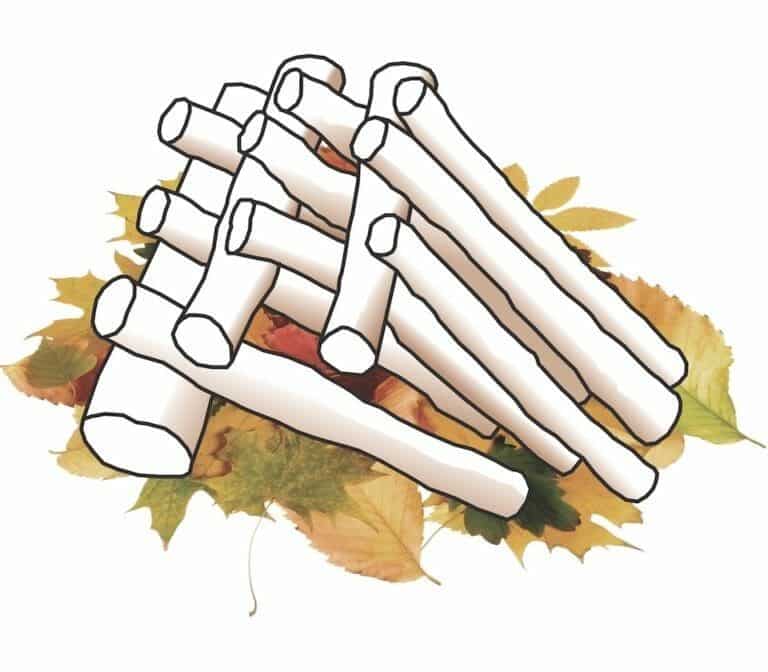

By Laura Sorkin
Shiitake mushrooms require faith in the unseen. The fungi flourish under the cover of bark for nine to twelve months preceding the first harvest, during which eternity you can do little more than cross your fingers. Once established, though, the crop will produce fruit for approximately seven years. Plus, these umami bombs fetch as much as $20 per pound at farmers markets. Up for the challenge? You’ll want to get started now, harvesting the logs that will serve as your growing medium before trees bud out and release the nutrients stored in their sapwood.
Not just any old logs will do. They should be 3 to 6 inches in diameter and about 3.5 feet long—cut from deciduous hardwoods. Oak, maple, ironwood and beech all make good candidates. Avoid pine and fruit trees, as well as wood covered in lichen.
Winter is also the ideal time to shop for spawn, live culture akin to seed. Serious growers prefer sawdust spawn and invest in the spring-loaded inoculation tool necessary to insert the sawdust into logs. Hobbyists tend toward shortcuts such as pre-inoculated wooden dowels, called plug spawn, or even pre-inoculated logs. (Fieldforest.net sells a wide variety of tools and spawn, including the beginner-friendly WR46; williams-sonoma.com carries pre-inoculated logs.)
Inoculation
In spring, once all danger of frost has passed, inoculate the logs using a power drill or a more efficient high-speed angle grinder with a drill-bit attachment. The size of the bit will depend on the type of spawn: The inoculation tool associated with sawdust spawn typically calls for a 12-mm bit; plug spawn, an 8.5-mm one. (Confirm the bit size with your supplier when purchasing spawn and/or an inoculation tool.) Working outside near a power source and wearing protective eye and ear gear, drill 1 inch-deep holes every 6 inches down the length of the log. Rotate the log a few inches and drill another row, adjusting the placement of the holes so that the overall pattern will resemble polka dots. Continue turning and drilling until you come back around to the first row.
If your spawn is in plug form, simply insert the dowels into the drilled holes and hammer until flush with the log. For sawdust spawn, place a wad of the spawn in a cup, plunge the inoculating tool into the cup to fill, then hold the tool up to the hole and push the button with your thumb to release. In either case, seal each hole with food-grade cheese wax. (I rely on a cheap deep fryer to melt the wax and a reusable dauber to apply it.) Arrange the logs as shown (see “Stacking the Logs,” below) in a shady, humid location; they should be close to the ground but ideally not lying on it, with as much surface area exposed to rain as possible. Any time it doesn’t rain for a week or two, give the logs a thorough watering.
Stacking the Logs: Place an ordinary log on the ground. Then arrange the inoculated ones atop it as depicted above. Illustration by Susan Huyser
Harvest
The following spring, once temperatures rise above 60°F, fruit the logs by submerging them in cold, clean water overnight (in a feed tank or a nearby creek). The next day, move the logs to a shady area and lean them against a tree or fence, with a tarp spread underneath. (Keep slugs at bay with an organic deterrent like Sluggo or set out beer traps.) Cover with a fruiting blanket or other permeable cloth, and wait five to seven days for the mushrooms to emerge.
Once the caps are open but not quite flat, cut the fruit from the log with a knife or twist it off by hand. Refrigerate the mushrooms in a paper—not plastic—bag for up to 10 days. By re-stacking the same logs in the original formation (see “Stacking the Logs,” above), you can re-fruit them every eight weeks until nighttime temperatures begin dipping below 40°F (at which point the mushrooms go dormant for winter). Should a log fail to fruit in the first place, peel back a bit of bark. If you see a white film, the inoculation was probably successful but needs more time to fruit. Re-stack and check again in six weeks.
The Bottom Line for Shiitake Mushrooms
The following estimates assume mushroom cultivation on 100 free logs and don’t factor in labor costs. Allow roughly three days for drilling and inoculating, as well as three hours per fruiting, spread over a week.
- Initial investment: Angle grinder with adapter and dedicated drill bit ($160); spring-loaded inoculator ($35); deep fryer ($20); four 2.5-pound bags cheese wax ($35); four wax daubers ($1); four 5.5-pound bags sawdust inoculant ($100); tarp ($5); fruiting blanket ($25) = $381.
- Harvest yield (from year two): Approximately 1/4 to 1/3 pound per log per fruiting, with two to three fruitings annually, depending on climate = 50 to 100 pounds.
- Retail price per pound: $10 to $20.
- Annual revenue (from year two): $500 to $2,000.
- Effective life of crop: Approximately seven years.
Reposted with permission from our media associate Modern Farmer.

 233k
233k  41k
41k  Subscribe
Subscribe 
